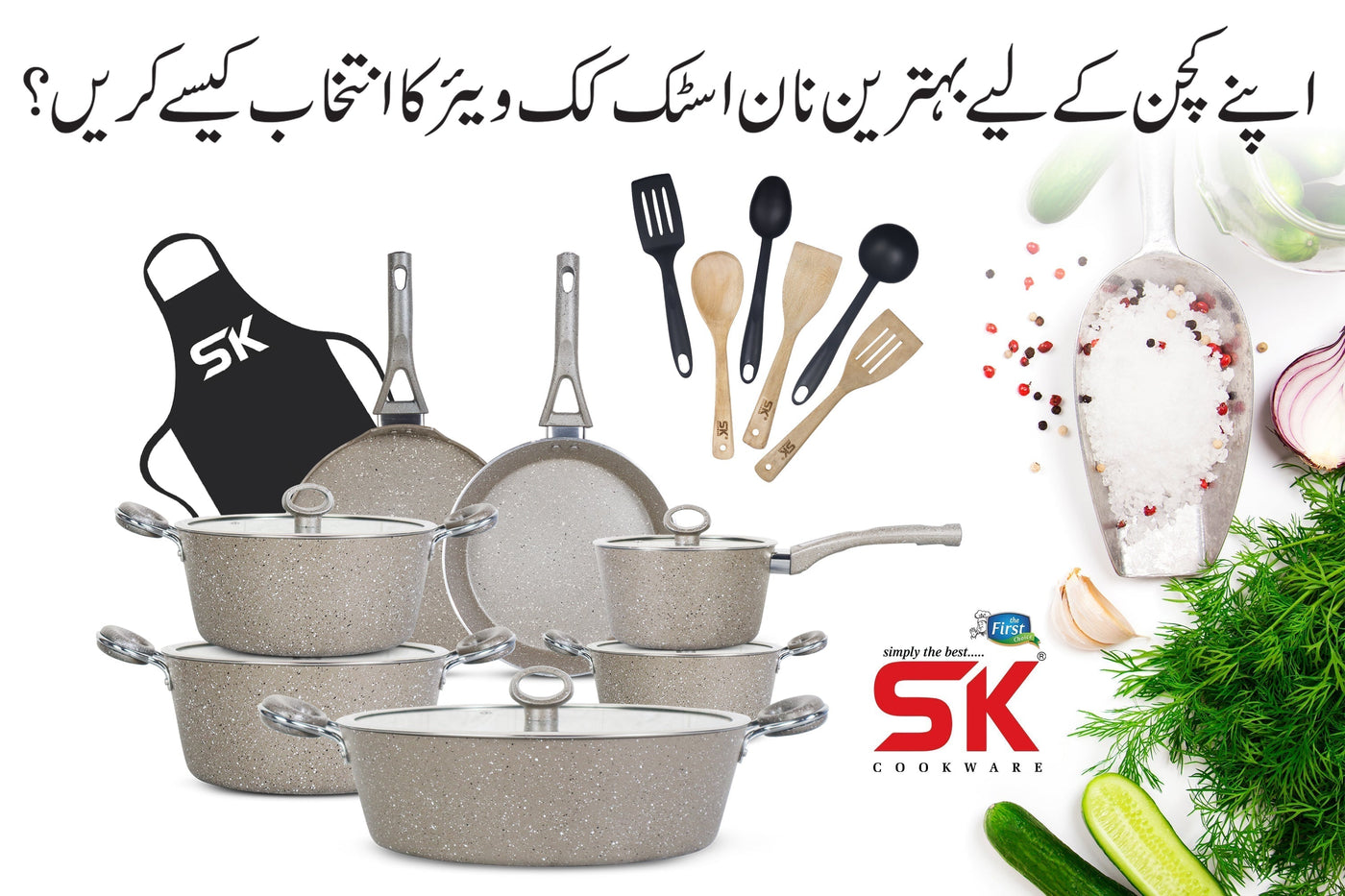How to Choose the Best Non-Stick Cookware for Your Kitchen?
Choosing the best non-stick cookware for your kitchen involves considering several factors to ensure you get a product that suits your cooking needs, is safe, durable, and easy to maintain. Here’s a step-by-step guide to help you make an informed decision:
1. Understand Non-Stick Coatings
- PTFE (Polytetrafluoroethylene): The most common non-stick coating, often referred to by the brand name Teflon. It’s durable and provides excellent non-stick properties but can degrade at high temperatures (above 500°F/260°C).
- Ceramic: A newer, eco-friendly option made from natural materials like sand and water. It’s free of PTFE and PFOA but may wear out faster than PTFE coatings.
- Enameled Cast Iron: Offers non-stick properties and is highly durable, but it’s heavier and more expensive.
- Seasoned Cast Iron or Carbon Steel: Requires seasoning to create a natural non-stick surface. It’s durable and can withstand high heat but needs more maintenance.
2. Check for Safety
- PFOA-Free: Ensure the cookware is free of perfluorooctanoic acid (PFOA), a chemical previously used in non-stick coatings that has been linked to health concerns.
- Heat Resistance: Look for cookware that can withstand high temperatures without releasing harmful fumes. PTFE coatings are safe at normal cooking temperatures but can degrade at very high heat.
- Material Safety: Avoid cookware with harmful chemicals or heavy metals like lead or cadmium.
3. Consider the Base Material
- Aluminum: Lightweight, heats evenly, and is affordable. Often used as a core material in non-stick cookware.
- Stainless Steel: Durable and non-reactive but typically requires a non-stick coating for easier food release.
- Cast Iron: Heavy and retains heat well, but not inherently non-stick unless seasoned.
- Hard-Anodized Aluminum: More durable than regular aluminum and resistant to scratches.
4. Evaluate Durability
- Look for cookware with a thick, sturdy base to prevent warping.
- Check for scratch-resistant coatings, especially if you plan to use metal utensils.
- Consider the warranty; a longer warranty often indicates higher quality.
5. Assess Ease of Cleaning
- Non-stick cookware should be easy to clean, ideally with just soap and water.
- Dishwasher-safe options can save time but may reduce the lifespan of the coating.
6. Choose the Right Size and Shape
- Select pieces that match your cooking habits (e.g., frying pans, saucepans, or griddles).
- Consider the size of your stovetop and oven to ensure compatibility.
7. Check Compatibility with Your Stove
- Ensure the cookware works with your stove type (gas, electric, induction, etc.). Induction-compatible cookware must have a magnetic base.
8. Set a Budget
- Non-stick cookware ranges from budget-friendly to high-end. Balance cost with quality and durability.
- Investing in a mid-range or high-quality set can save money in the long run by lasting longer.
9. Read Reviews and Recommendations
- Look for reviews from trusted sources or other home cooks to gauge performance and durability.
- Consider reputable brands known for quality non-stick cookware, such as SK Cookware.
10. Test Before Buying (If Possible)
- If you can, visit a store to feel the weight, check the handle comfort, and inspect the build quality.
Top Recommendations:
- Best Overall: Signature Non-Stick Cookware.
- Eco-Friendly Option: Victoria Non-Stick Cookware.
- High-End Choice: Supreme Non-Stick Cookware.
- Budget-Friendly: Unbeatable Non-Stick Cookware.
By considering these factors, you can choose the best non-stick cookware that fits your kitchen needs and cooking style.








